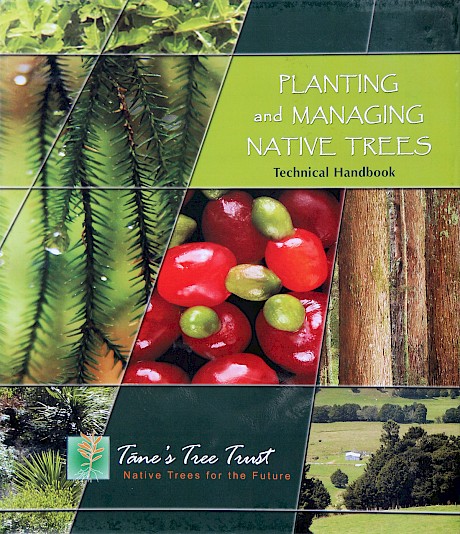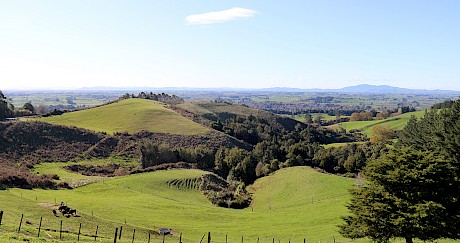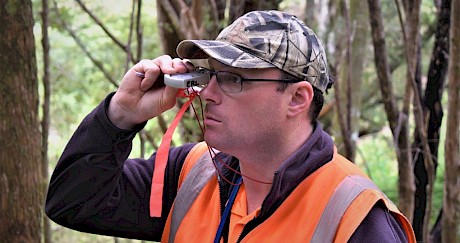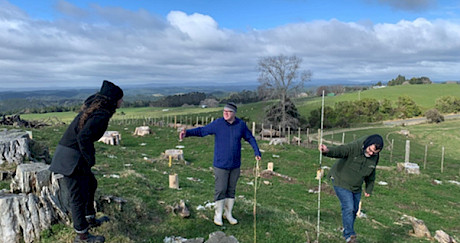Tāne’s Tree Trust Technical HandbookProject Status: Completed
Over several years TTT has been working on the production of the Technical Handbook entitled Planting and Managing Native Trees. Information covered includes the ecological principles of restoration and planting New Zealand indigenous trees and shrubs as well as providing practical guidelines for planting and managing natives.
Each section contains stand-alone technical articles written in a user-friendly style and fully illustrated in colour. The articles present referenced material and are peer-reviewed. New sections and articles will be uploaded as they become available.
Background
In consultation with landowners, local community groups and agency representatives attending Tāne’s Tree Trust (TTT) workshops at Hikurangi (Northland) and Kaukapakapa (north of Auckland), it was agreed that the Trust should collate historical and recent information in the form of a handbook that is easy to update.
The handbook is intended to be a comprehensive reference guide that can be updated regularly in order to disseminate information about best-practice methods for the establishment and management of indigenous plantations. It will be used at TTT workshops, seminars and field days, and as resource material for proposed tertiary courses on indigenous plantation forestry.
The project is managed by Tāne’s Tree Trust and has had funding and support from FITEC (Forest Industry Training and Education Council), the Ministry of Agriculture and Forestry’s Sustainable Farming Fund, and Tāne’s Tree Trust.
Contents of the Handbook
 Completed
Completed
Sections with articles in the TTT Technical Handbook that are already published include:
Title page
Foreword
1. Introduction
1.1 Why do we need a Handbook?
1.2 How to use the Handbook?
1.3 Introducing Tāne’s Tree Trust
2. Objectives for establishing native trees
2.1 Objectives and strategies for planting
2.2 Options for establishing native trees
3. Cultural and historical perspective on planting natives
3.1 Nga Taonga o te Wao Nui a Tane – a cultural perspective
3.2 Native forests – an historical perspective
4. Requirements for establishing native trees
4.1 Physiological factors – trees and environment
4.2 Lessons from nature –using ecology to help grow native trees
5. Seed collection and propagation
5.1 Seeding of native trees and shrubs (yet to be published)
5.2 Eco-sourcing natives (yet to be published)
5.3 Choice of nursery method – container or open-ground
5.4 Establishment performance of native shrubs – a comparison of container and open-ground plants
6. Site selection
6.1 Key factors in site selection
6.2 Sites for planting native trees
7. Site preparation
7.1 Planting – getting started
7.2 Livestock and pest management
7.3 Preparing grass sites for planting – herbicides
7.4 Preparing gorse, broom and blackberry sites for planting natives
8. Planting and maintenance of natives
8.1 Planting techniques for natives
8.2 Planting patterns and density
8.3 Maintenance – weed control (yet to be published)
9. Planting and managing natives in riparian areas
9.1 Riparian margins – an introduction
9.2 Riparian planting for sediment, nutrient and pathogen management
9.3 Riparian planting for aquatic and terrestrial biodiversity
9.4 Riparian planting for native timber and multiple purposes
9.5 What is it with willows – pest, resource or opportunity for native forests?
10. Native tree plantations
10.1 Nationwide survey of planted native trees
10.2 Performance of planted native conifer trees
10.3 Performance of planted native hardwood trees
10.4 Performance of planted native shrubs
10.5 Carbon sequestration by planted native trees and shrubs
10.6 The Kauri 2000 Trust – plant a kauri – recreate a forest
10.7 Establishing a native production forest – Rewanui Forest Park, Wairarapa
11. Native tree plantations
11.1 Ecology and distribution of totara (yet to be published)
11.2 Establishing and managing plantations of totara (yet to be published)
11.3 Management of naturally regenerating totara on farms
11.4 Weaving resiliance into our farming landscapes with native forestry
Future
Proposed further sections and technical articles to be published when funding permits include:
12. Monitoring of planted natives
12.1 Monitoring performance of plantings
12.2 TTT native tree database project
12.3 Survey methods
12.4 Plot establishment
12.5 Tree measurements
12.6 Equipment requirements
13. Early management of natives
13.1 Silvicultural releasing
13.2 Stem selection
13.3 Pruning and thinning
14. Continuous Cover Forestry
14.1 What is Continuous Cover Forestry?
14.2 History of Continuous Cover Forestry
14.3 Implementing CCF for native forests
15. Wood quality and utilisation
15.1 Historical perspective
15.2 Wood quality of native trees
15.3 Current uses
16. Species
16.1 Kauri
16.2 Totara
16.3 Beeches
16.4 Hardwoods
16.5 Rimu
16.6 Tanekaha
16.7 Matai and miro…
16.8 Kanuka
17. Carbon
17.1 Managing planted forest for carbon sequestration
17.2 Permanent Forest Sink Initiative
18. Case studies
18.1 Northland Totara Working Group
18.2 Project Kahikatea
18.3 Trimble Foundation planting trials
18.4 Amakiwi
18.5 Mangatangi kauri
18.6 Others…
Sourcing the handbook and articles
PDF copies of articles are available on the Publications page.



